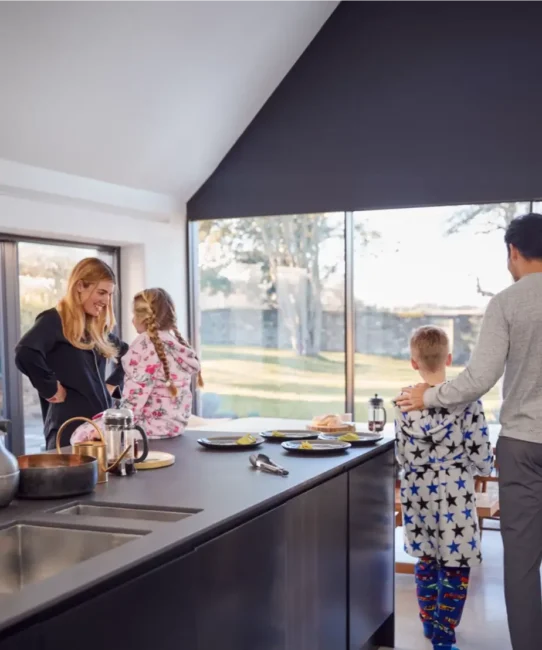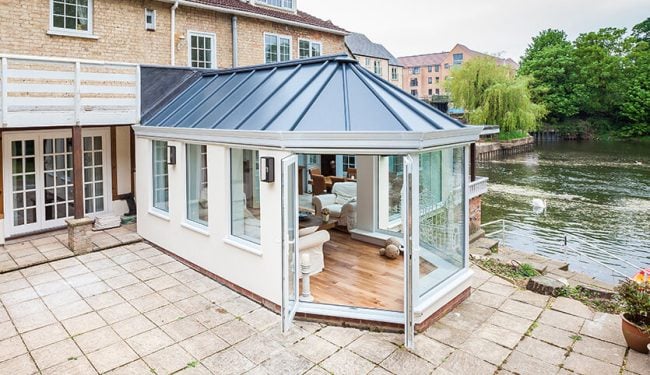
Pete’s Perspective
For more than 30 years, our Managing Director, Peter Wheeler, has been totally committed to searching out new and better ways for improving our customers’ homes.
Here, every month he shares his learning and insights, along with new ideas and top tips.
Pete’s Perspective: Monthly Tips & Insights for Homeowners Planning Improvements
New ways to approach planning and design
When you decide to extend your property, you’re investing in one of the most valuable home improvements you can make. Why? Because it not only makes your home more appealing to potential buyers, but it can increase your property’s value, even offsetting the cost of the build itself. It’s like getting the extension for free—except more often than not complications creep in and costs spiral, leaving a sour taste and a sore bank account.
In this blog I’m going to explain how you can stack the odds in your favour and get the extension you want without the nasty surprises.
Where should you start?
Probably not where you think—and that’s my honest advice. Going straight to an architect seems like the obvious first step, but it’s not the best choice for everyone. Going down the architect designed route can mean spending thousands before any building work begins. You’ll likely face added costs for structural engineers to approve designs, plus extra charges for redraws when making changes to appease building control or gain planning approval. In some case the project runs up against so many objections it never even gets in the ground. Sound familiar?
Unless you’re looking for something totally unique that’s never been built before, a more direct approach could save you a lot of time and money.
You might be surprised to learn that, with a simple home visit usually taking no more than a couple of hours, our design team can generate a complete six-view drawing of your proposed home extension. With thousands of design options available, there’s plenty of scope for doing something individual to suit your home. Thanks to our advanced system, which includes a built-in virtual structural engineer, there’s no need to hire an architect or pay for additional structural engineering. And the best part? It’s all completely free! All our plans are pre-approved for structural integrity using third-party accreditation.
Crushing the myth of planning
Many good-sized, single-storey extension plans comply with the government’s Permitted Development rights regulations. In such cases no planning application is needed. If there is any uncertainty, a prior approval application can be used instead of a full planning application. This process is often faster and requires only basic imagery, not detailed drawings, making it simpler and cheaper.
One of the most common misconceptions I hear is people confusing building regulations with planning permission. In simple terms, planning permission relates to the size, appearance, and position of your extension, and usually involves notifying local residents. Building regulations, are concerned with how the extension is built—making sure it’s structurally sound and compliant with current UK building standards. Since most extensions create habitable spaces, they almost always require a building regulations application. (One exception is glass roof extensions, which can sometimes be exempt.)
The traditional route for planning applications often involves hiring an architect first, followed by a structural engineer, and then bringing in a builder for advice on foundations and feasibility. But we do things differently.
Our in-house surveying and technical team uses the latest CAD technology right on site, allowing us to position your extension with pinpoint accuracy. They know local planning and building regulations inside out and are available to discuss any final design or specification changes with you. Once everything is agreed, our technical team takes over preparing and submitting both your planning and building control applications on your behalf, all at a surprisingly low cost.
Your friendly, local builders… or are they?
Now here’s a story I hear all the time… After spending thousands on architect designs and planning applications, you finally choose a local builder, often based on a few photos they’ve shown or a recommendation from a friend.
Everything seems great, and the excitement starts to build. But there are a few things to watch out for.
Not so firm foundations
Even if you’ve been given a price, it’s usually based on a standard foundation. They will tell you the true foundation requirements are determined by the Building Control Officer during their inspection, and if deeper or reinforced foundations are needed (which is often the case), it can add thousands to your budget.
Unhappy flue
Another common issue concerns boiler flues. Builders often leave this detail to be sorted mid-build, only for the homeowner to discover that the flue can’t vent at 90 degrees as expected. In some cases, this results in having to replace the entire boiler—another unexpected cost running into the thousands.
Those are just a few of the issues that can complicate and frustrate what was supposed to be an exciting new improvement to your home. We’ve made it our objective to simplify the whole process and make it more predictable for you. Reducing the cost and the stress of big improvements.
I hope you’ve found this blog both helpful and informative. Read Part 2 to find out how we have streamlined our operations and project management to make our build times astonishingly fast.


























